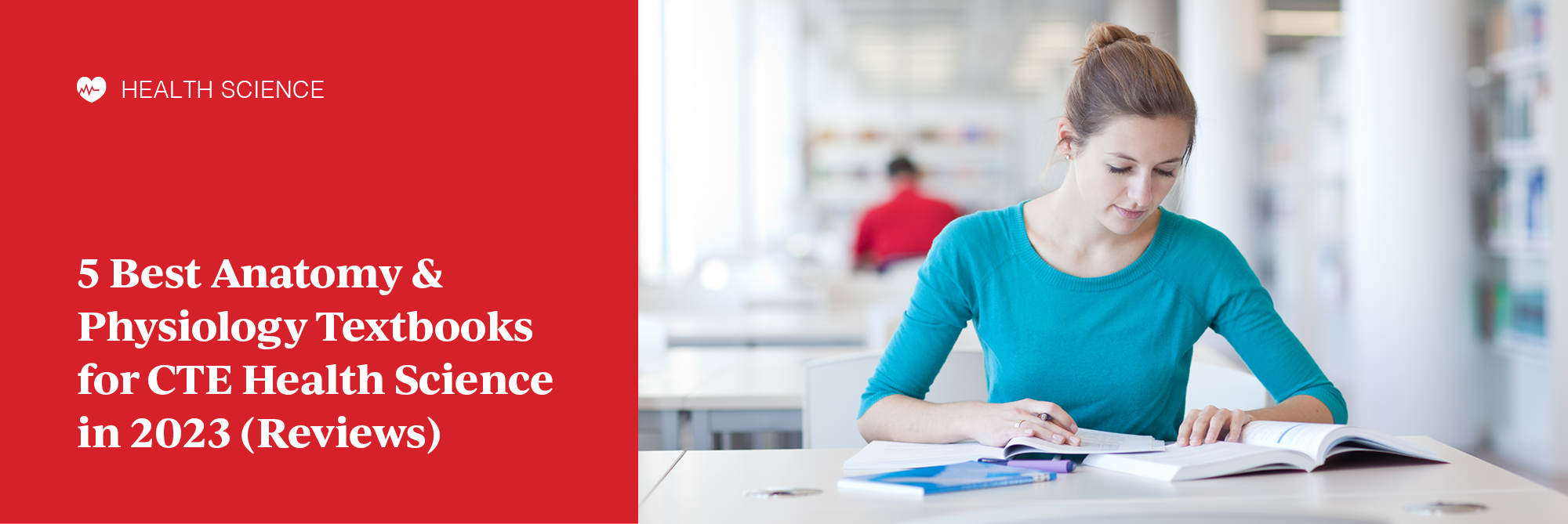Anatomy and Physiology | Health Science
5 Best Anatomy & Physiology Textbooks for CTE Health Science in 2023 (Reviews)
Anatomy and physiology is a crucial topic for every health science student to learn.
To work in any healthcare career, your students need to understand the structure and function of the human body systems.
On top of that, these concepts are an essential piece of every health science certification!
That means you need a stellar resource to support your anatomy and physiology curriculum.
But how do you know which one to choose?
In no particular order, the top five anatomy and physiology textbooks are:
- Anatomy, Physiology, & Disease
- Hole’s Human Anatomy & Physiology
- Understanding Anatomy & Physiology
- Body Structures and Functions
- Introduction to Anatomy and Physiology
In this blog, you’ll find an overview of each book to help you determine which could be right for you!
1. Anatomy, Physiology, & Disease
- Bruce J. Colbert, Jeff J. Ankney, and Karen T. Lee
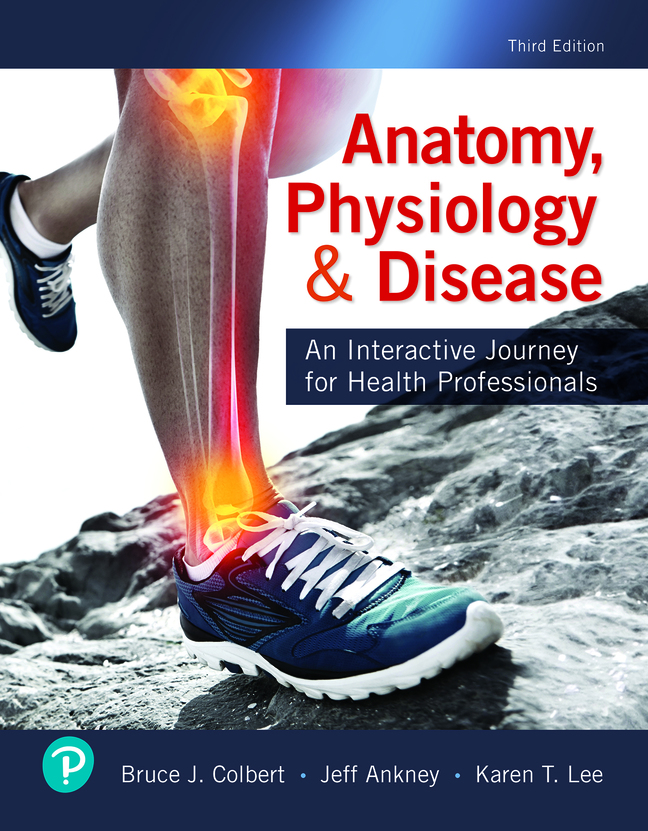
- Published: 2020
- Retail Price: $85
Anatomy, Physiology, & Disease introduces students to foundational information about the human body, how it operates, and ailments that may threaten it.
The book uses the concept of a narrative journey that walks each student through each system and how it works as part of the body.
This “journey” is organized into 19 chapters:
- Anatomy, Physiology, and Disease: Learning the Language
- The Human Body: Reading the Map
- Biochemistry: The Basic Ingredients of Life
- The Cells: The Raw Materials and Building Blocks
- Tissues and Systems: The Inside Story
- The Skeletal System: The Framework
- The Muscular System: Movement for the Journey
- The Integumentary System: The Protective Covering
- The Nervous System: The Body’s Control Center
- The Endocrine System: The Body’s Other Control Center
- The Senses: The Sights and Sounds
- The Cardiovascular System: Transport and Supply
- The Respiratory System: It’s a Gas
- The Lymphatic and Immune Systems: Your Defense Systems
- The Gastrointestinal System: Fuel for the Trip
- The Urinary System: Filtration and Fluid Balance
- The Reproductive System: Replacement and Repair
- Basic Diagnostic Tests: What Do the Tests Tell Us?
- The Journey’s End: Now What?
Within each chapter, you’ll find callout boxes for students that help to reinforce how the concepts of each system relate to clinical applications in the healthcare workplace.
You’ll also find an appendix filled with related information including medical terminology and common disorders that affect the body systems.
Overall, any teacher looking for a foundational textbook would find Anatomy, Physiology, & Disease useful.
2. Hole’s Human Anatomy & Physiology
- Authors: Charles Welsh and Cynthia Prentice-Craver

- Published: 2022
- Retail Price: $177 (paperback), $94 (eBook)
Hole’s Human Anatomy & Physiology introduces the fundamental concepts of human anatomy and physiology, assuming the student has no prior knowledge.
These concepts are organized into 24 chapters:
- Introduction to Human Anatomy and Physiology
- Chemical Basis of Life
- Cells
- Cellular Metabolism
- Tissues
- Integumentary System
- Skeletal System
- Joints of the Skeletal System
- Muscular System
- Nervous System I: Basic Structure and Function
- Nervous System II: Divisions of the Nervous System
- Nervous System III: Senses
- Endocrine System
- Blood
- Cardiovascular System
- Lymphatic System and Immunity
- Digestive System
- Nutrition and Metabolism
- Respiratory System
- Urinary System
- Water, Electrolyte, and Acid-Base Balance
- Reproductive Systems
- Pregnancy, Growth, and Development
- Genetics and Genomics
Within each chapter, the student walks through the information in a three-step approach.
First, they learn key concepts and mechanisms of the body system.
Then, they complete practice activities to help reinforce the information.
Last, students do a self-assessment to measure their knowledge and understanding.
Because the information in Hole’s Human Anatomy & Physiology is presented as if the reader has no prior knowledge of A&P, this book is a great fit for an introductory anatomy and physiology course.
If you teach a more advanced class, this book may not be the right fit.
3. Understanding Anatomy & Physiology
- Author: Gale Sloan Thompson
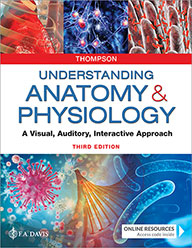
- Published: 2020
- Retail Price: $74 (paperback), $56 (eBook)
Understanding Anatomy & Physiology is designed to help students learn basic anatomy and physiology through a visually focused approach.
The book includes 25 chapters, which are organized into five sections:
- Foundation of the Body
- Covering, Support, and Movement of the Body
- Regulation and Integration of the Body
- Maintenance of the Body
- Continuity
Foundation of the Body includes the first four chapters of the book. It introduces students to the basics of the human body with a heavy focus on cells.
Covering, Support, and Movement of the Body contains six chapters that discuss the integumentary system, skeletal system, muscular system, and how they work together. Students also learn about detailed concepts like tissues, bones, and joints.
Regulation and Integration of the Body includes three chapters focused on the nervous system, sense organs, and endocrine system.
Maintenance of the Body spans across nine chapters and includes multiple the body systems, such as the respiratory system, digestive system, and lymphatic system.
Continuity contains the final three chapters of the book, which discuss the reproductive systems, human development, and the basics of heredity.
Overall, each chapter heavily incorporates full-color illustrations and figures to make complex anatomy and physiology concepts easier to understand.
That means Understanding Anatomy & Physiology could be a great option for an introductory course.
4. Body Structures and Functions
- Authors: Ann Senisi Scott and Elizabeth Fong
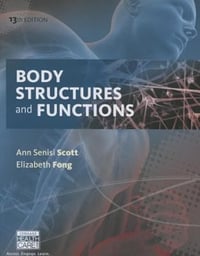
- Published: 2019
- Retail Price: $127
The Body Structures and Functions textbook provides an overview of the human body, how it functions, and related medical terminology.
The book is made up of 22 chapters:
- Introduction to the Structural Units
- Chemistry of Living Things
- Cells
- Tissues and Membranes
- Integumentary System
- Skeletal System
- Muscular System
- Central Nervous System
- Peripheral and Autonomic Nervous System
- Special Senses
- Endocrine System
- Blood
- Heart
- Circulation and Blood Vessels
- The Lymphatic System and Immunity
- Infection Control and Standard Precautions
- Respiratory System
- Digestive System
- Nutrition
- Urinary/Excretory System
- Reproductive System
- Genetics and Genetically Linked Diseases
Each chapter teaches students about different body functions and the medical terminology related to them.
You’ll also find sections that highlight the real-world applications of needing to know that information when working in the healthcare field.
If you teach an anatomy and physiology course focused on contextualizing medical terms, Body Structures and Functions could be just what you want!
5. Introduction to Anatomy and Physiology
- Authors:
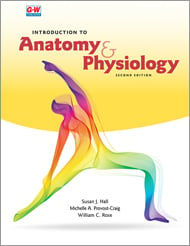 Susan J. Hall, Michelle A. Provost-Craig, and William C. Rose
Susan J. Hall, Michelle A. Provost-Craig, and William C. Rose - Published: 2021
- Retail Price: $128
Introduction to Anatomy and Physiology is designed to teach students about the human body systems in a straight-forward, easily digestible format.
To accomplish this, the book is organized into 15 chapters:
- Foundations of Human Anatomy and Physiology
- Cells and Tissues
- Membranes and the Integumentary System
- The Skeletal System
- The Muscular System
- The Nervous System
- The Sensory Systems
- The Endocrine System
- The Respiratory System
- The Blood
- The Cardiovascular System
- The Lymphatic and Immune Systems
- The Digestive System and Nutrition
- The Urinary System
- The Male and Female Reproductive Systems
Each chapter includes learning objectives, lesson summaries, vocabulary exercises, self-assessments, and examples of real-world applications.
This structure — paired with the fact that the book was written specifically for students in grades 9-12 — make Introduction to Anatomy and Physiology a great choice for a high school course!
On the flip side, this book may not go in-depth enough for your needs if you teach a more advanced course.
Which Anatomy and Physiology Textbook Is Right for You?
Though there are many other anatomy and physiology textbooks out there, this list will at least give you a starting point!
As you continue to learn about each resource, keep in mind that many teachers have success with more than just a traditional textbook.
In fact, many health science instructors have found that a comprehensive curriculum system works better for teaching the details of anatomy and physiology than textbooks!
iCEV offers an extensive anatomy and physiology course as part of its health science curriculum. With iCEV, you gain access to pre-built lessons, interactive activities, assessments, and more.
To learn more about iCEV and if it's right for you, visit the health science curriculum page:
